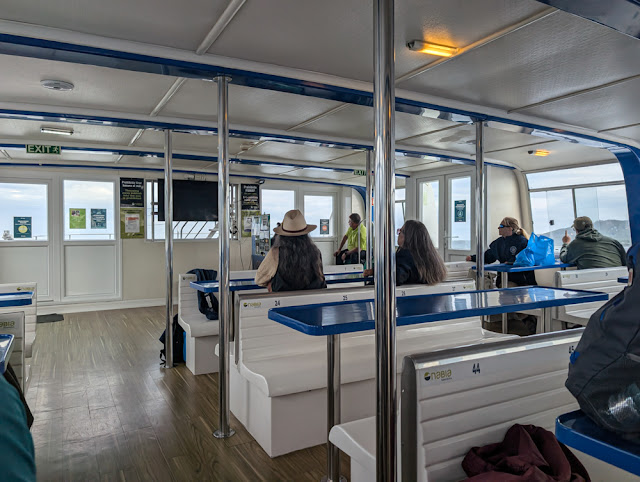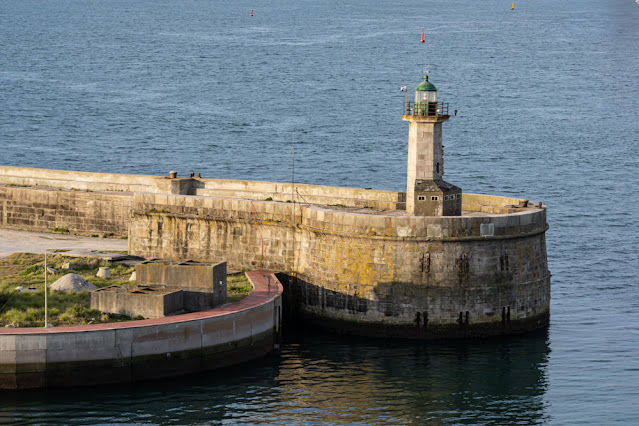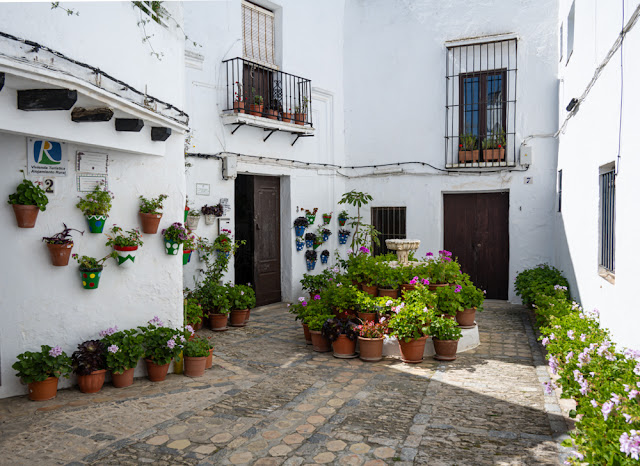I cheated a little, this is yesterday's sunset off the coast of Morocco.
We had an early arrival in Cadiz, Spain. We were in Cadiz in 2015 and had a private walking tour of the city and old fort. Today we are doing a ships tour to the hilltop town of Vejer de la Frontera and then to Cape Trafalgar.
It is located in the southwest of the Iberian Peninsula off the Atlantic Ocean separated from neighboring San Fernando by a narrow isthmus.
Cádiz, one of the oldest continuously inhabited cities in Western Europe, was founded by the Phoenicians as a trading post. In the 18th century, the Port in the Bay of Cádiz consolidated as the main harbor of mainland Spain, enjoying the virtual monopoly of trade with the Americas until 1778.
During the Age of Exploration, the city experienced a renaissance. Christopher Columbus sailed from Cádiz on his second and fourth voyages and the city later became the home port of the Spanish treasure fleet. Consequently, it became a major target of Spain's enemies.
When we arrived in Cadiz, we weren't the only cruise ship here.
Winstar's Star Pride and Holland America's Volendam. There were also several other cruise ships at various piers which I was unable to identify. The Volendam is doing HAL's Pole to Pole World Cruise. HAL currently has two world cruises in process, like many other lines. The current theory seems to be quantity over quality. As they add more "world cruises" it becomes more difficult to fill the ship with thru travelers, thus they began to sell smaller and smaller segments which decreases the continuity we used to experience on a "world cruise".
I did spot The World, the private residence cruise ship. We last saw this ship several years ago in the Carribean. The World was being serviced. It wasn't in drydock but was being attended by a number of cranes in a special area of the port. It looked like some major work was being done.
After about an hour of travel, we arrived in Vejer.
I will just present a few photos of our 90-minute walk.
The "new" city as viewed from the "old".

An interesting door knocker which doubles as the opener.

It was Sunday and obviously a wash day for many.
We then made our way to the Cape of Trafalgar.
Cape Trafalgar is a headland in the Province of Cádiz in the southwest of Spain. The 1805 naval Battle of Trafalgar, in which the Royal Navy commanded by Admiral Horatio Nelson decisively defeated Napoleon's combined Spanish and French fleet, took place just off the cape.

As if I needed a reminder that I am getting OLD, I failed to even notice that the beach featured a lot of young ladies who were topless. I was too busy getting photos of the cape, lighthouse and flowers to even pay attention to the beach goers! It wasn't until we were back on the coach that Kay pointed it out.

Our next stop was to be Algarve, Portugal. As I was working on this post at 7:00 AM Monday morning, the captain announced we would be unable to make the port due to hazardous conditions. This was to be a tender port and the wind was too high.
Our next stop will be tomorrow in Leixoes, Portugal. We are scheduled for noon, but the captain is trying to arrange an earlier time.







































































